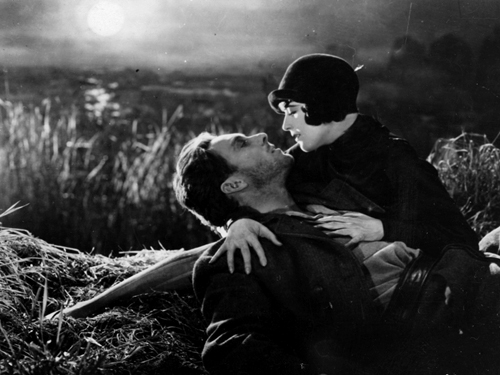The last couple of years, Sabzian celebrated its birthday around Valentine’s Day. From this year on, this festive night will be given a different form. By analogy with similar initiatives in other art forms, Sabzian creates a new yearly tradition: Sabzian invites a guest to write a State of Cinema and to choose a film that connects to it. This way, once a year, the art of film is held against the light: a speech that challenges cinema, calls it to account, points the way or refuses to define it, puts it to the test and on the line, summons or embraces it, praises or curses it. A plea, a declaration, a manifest, a programme, a testimony, a letter, an apologia or maybe even an indictment. In any case, a call to think about what cinema means, could mean or should mean today.
For the first edition, the State of Cinema of 2018, Sabzian is honoured to welcome filmmaker Sarah Vanagt. She has chosen Sunrise: A Song of Two Humans (1927) by F.W. Murnau. The film will be accompanied by musician Seppe Gebruers.
Sarah Vanagt (1976) makes documentaries, video installations and photos, in which she combines her interest for history with her interest for (the origins of) cinema. Her work includes films such as After Years of Walking (2003), Little Figures (2003), Begin Began Begun (2005), Boulevard d’Ypres (2010), The Corridor (2010), Dust Breeding (2013), In Waking Hours (2015); and video installations such as Les Mouchoirs de Kabila (2005), Power Cut (2007), Ash Tree (2007). Vanagt’s most recent film Alle de tranen (2017) starts from the tiny glass lenses made by Antoni Van Leeuwenhoek, a 17th-century draper from Delft and recently had its Belgian avant-première at CINEMATEK (Brussels). You can find more information about her work on her website.
Seppe Gebruers (1990) is a Belgian pianist, improviser and composer. The improvisation music scene already knows his name through his work in the eclectic jazz septet Ifa y Xango, the piano duo with Erik Vermeulen, named Antiduo, Bambi Pang Pang featuring the legendary Andrew Cyrille (who played with Cecil Taylor, Coleman Hawkins, John Coltrane and others), the pop project Mount Meru, the trio with the pioneer Paul Lovens and Hugo Antunes (Seppe, Hugo and Paul) and his solo project. You can find more information about his work on his website.
This evening is a collaboration between Sabzian and Cinema Galeries.


